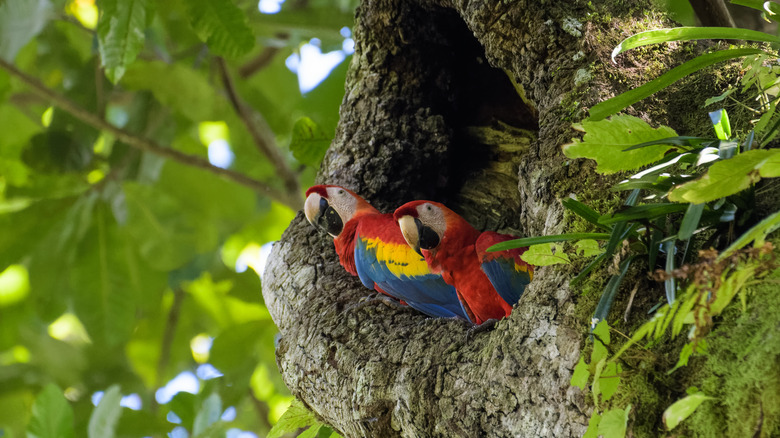Things to know about Carara National Park
This is a popular national park, and plenty of tours are available. Book them beforehand, or hire an amateur guide at the entrance if you arrive early. You should dress correctly for the area, which means closed-toed shoes. Long pants and a long-sleeved light shirt are good ideas as well. This area has a ton of mosquitos, so you should bring bug spray.
One thing to note: The theft of items inside cars is pretty common here. Don’t leave anything in there, especially out in the open. This is particularly true at the Río Grande de Tárcoles bridge (meaning “river of lizards” in the Huetar indigenous language), which spans the Tárcoles River on the north side of the park. That said, the bridge is a great place to check out some enormous crocodiles.
This is also a wonderful place for hikers — there are two trails that aren’t very long. First, you can park south of the bridge near the rangers’ station. That will take you to the Laguna Meandrica trail, which is 2.7 miles long and goes along the river. (It’s not open from late August through the middle of November) because it’s generally flooded. Another one to check out if you’re looking for something shorter is the Araceas Nature Trail, which starts at the Quebrada Bonita ranger station. This one is 0.6 miles long and runs in a loop, so it’s great if you want to pack your day.
Creatures you’ll see in Carara National Park

Carara National Park is the perfect spot for animal and bird lovers because it’s a transitional forest (it contains a rainforest and a dry forest). This creates a habitat for an incredible number of creatures. If you’re a birder, this is going to feel like heaven. There are over 400 different bird species here, including turkey vultures, keel-billed toucans (assume your guides have heard every Froot Loops joke out there), boat-billed herons, chestnut-backed antbirds, fiery-billed aracari, and so many more. One thing to keep in mind is that while you may find birders around who are willing to point things out to you, it’s helpful to hire a guide or join a tour with people who are used to spotting these creatures. Binoculars are an excellent item to pack.
When visiting the Río Grande de Tárcoles bridge, do not feed the crocodiles and obey all posted signs. These aren’t animals you really want looking to you for food. You may see two-toed sloths and white-faced monkeys around the park. There are adorable little agouti and margay cats, aka monkey cats, as well as poison-arrow frogs, kinkajou, and great anteaters. Again, a tour will help you spot all these animals and birds.

